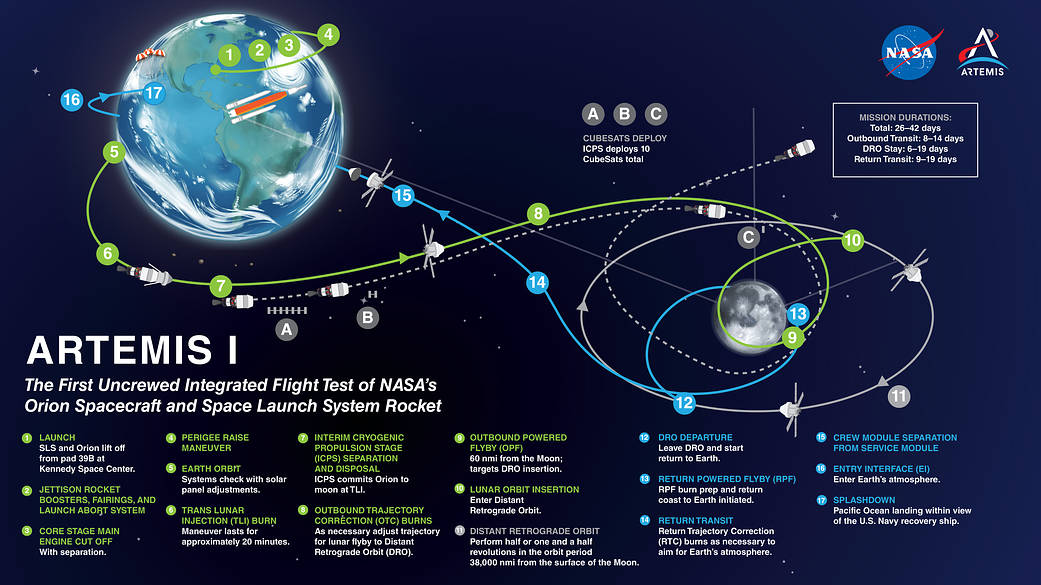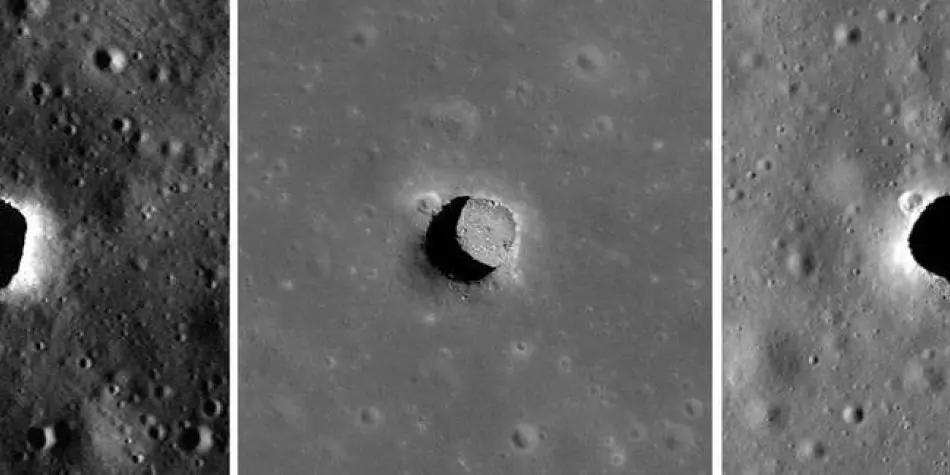Nearly 200 wells have been discovered on the Moon with a stable temperature of 17ºC. These wells would be ideal for projects such as Artemis, which seeks to bring the moon again and even establish colonies in it.
The moon can reach terrible temperatures of 127 ° C during the day and -173 ° C during the night, from hell to extreme cold. But NASA found shaded locations inside wells with a temperature of 17 ° C, pleasant for any human being.
The first lunar grave was discovered in 2009 by the Kaguya tube (formerly Selene) of the Japanese Aerospace Agency (Jaxa) and thanks to the thermal chamber of the NSAnnaissance Orbiter (LRO) spacecraft of NASA, these new graves have been discovered.
These wells suppose many advantages in addition to temperature. The wells provide protection of solar winds, micrometeoritos and cosmic rays. Tyler Horvath, one of those responsible for the discovery, explained that "surviving the lunar night is incredibly difficult because it requires a lot of energy, but being in these graves and caves practically eliminates that requirement completely."
Artemis project

The Artemis program is an international space program that seeks to step on the Moon again, establish a sustainable presence on the surface and lunar orbit and lay the foundations of a lunar economy.
Led by NASA has the support of half a dozen space agencies (including the European and the Mexican) and a large number of private companies. Officially, it is considered the prelude to NASA's space program to put a man on Mars throughout the 2030s.
At a practical level, it is a colossal project for deployment of infrastructure in space. During the next decade, Artemis will develop and put in orbit (or on the surface of the moon) all types of rotors, robotic landing modules, satellites, space stations and basic infrastructure of the lunar base. The first teams will also take to start exploiting the satellite resources. Artemis is the most solid project for the effective 'colonization' of the moon.
What are the Artemis missions?
The Artemis program is articulated around a series of main missions (called Missions 'SLS' by the 'Space Launch System', the first lunar rocket designed for manned missions that NASA has stood up since Saturn V). To achieve these missions, a series of logistics and support missions are needed that put robotic landing modules, the Lunar Gataway or the basic infrastructure of the lunar base.
| NAME | DESTINATION | YEAR | ROCKET | BURDEN | DESCRIPTION |
|---|---|---|---|---|---|
| Artemis i | Lunar orbit | Mid -2022 | SLS Block 1 | Orion 13 satellites | First SLS and Orion launch |
| Artemis II | Lunar orbit | 2024 | SLS Block 1 | Orion | First manned flight. It will be a mission similar to that of Apollo 8 |
| Artemis III | Lunar surface | 2025 | SLS Block 1b | Orion | Manned wizard |
| Artemis IV | Lunar lunar orbit | 2026 | SLS Block 1b | Orion Lunar Gataway Modules | Mission to Lunar Gataway |
| Artemis V -ix | Lunar lunar orbit | 2026-2030 | SLS Block 1b | Habitats, rotars, scientific instruments and resource extraction equipment | Home and preparation of regular missions |





























